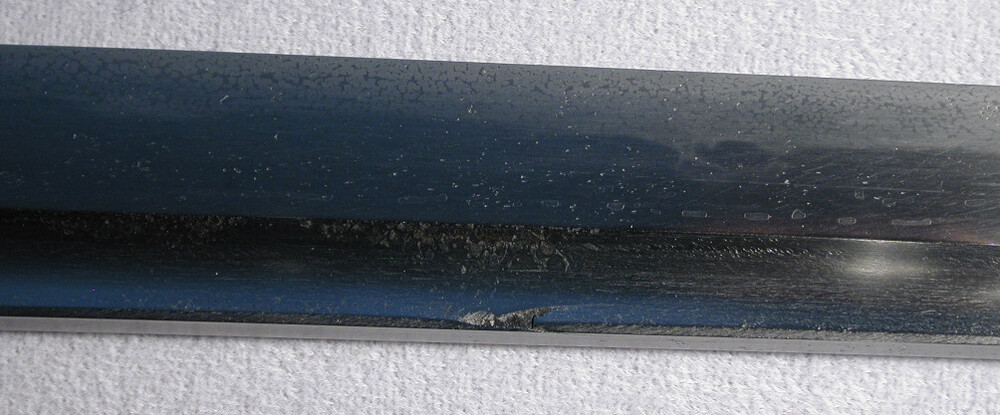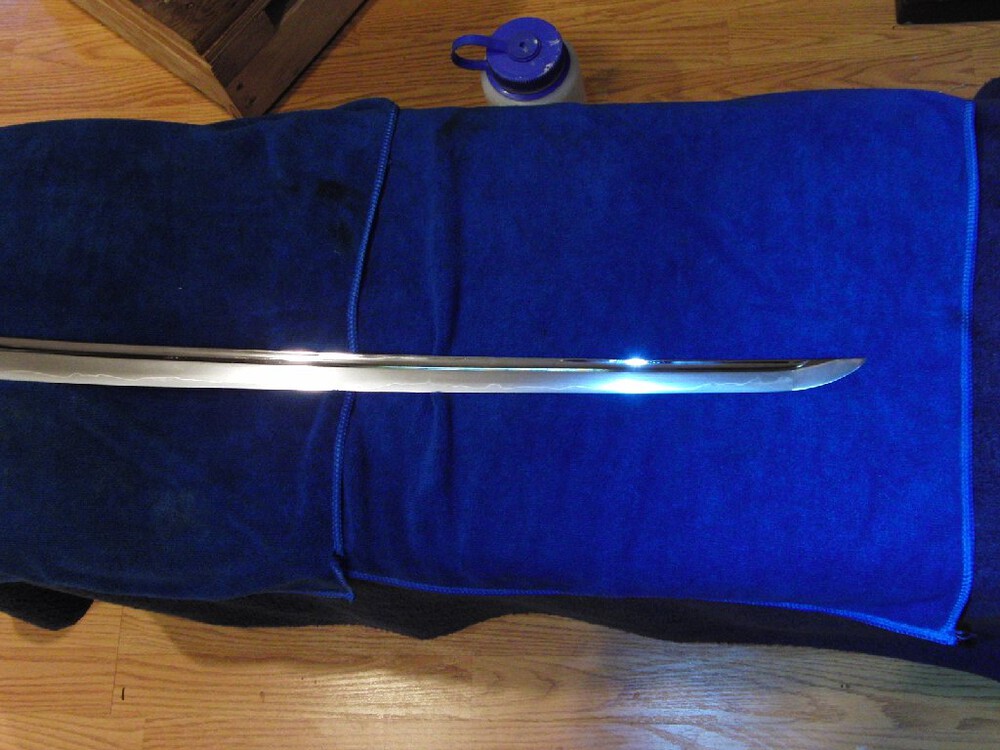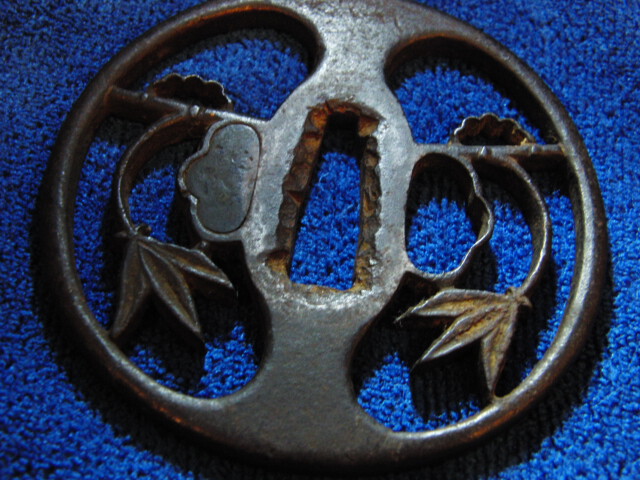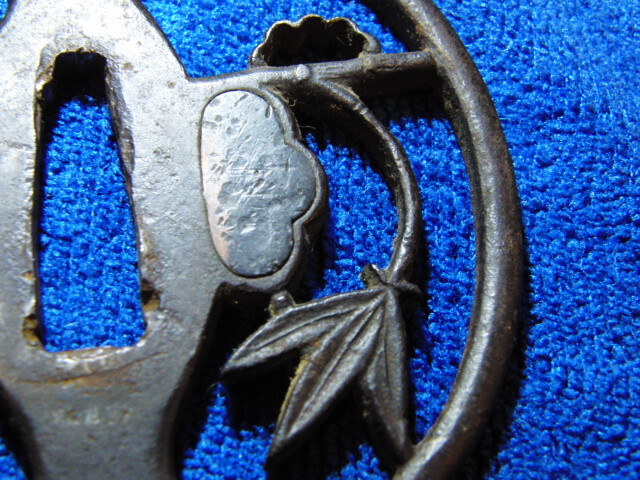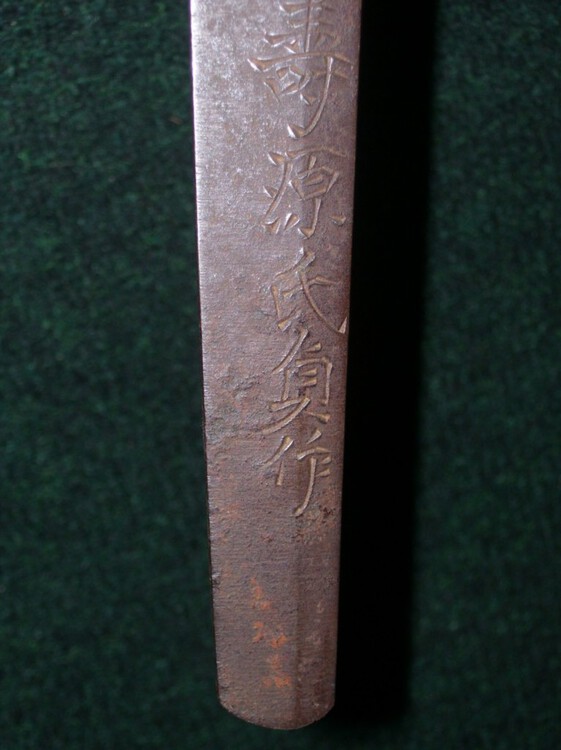
kfkonrad
Members-
Posts
25 -
Joined
-
Last visited
Everything posted by kfkonrad
-
A lot of open grain, the boshi is quite tired (but still present), and ware. If these are the only flaws, structurally they are most likely not fatal. I agree with Grey though... it looks to be a tired sword. Any more photos?
-
Motohaba: 35mm Motokasane: 8mm Sekihaba: 20mm Sekikasane: 5+mm Sori: 5/8"+
-
Thanks Stephen! The original clean up polish was done by someone that Alf uses. I guess the sword was a stick of rust when he got it, and Alf had someone clean up much of it (perhaps too much in some areas). There's a decent amount of niku on the blade, and the edge was satisfactory for testing. The monouchi area is worn down, and it'll never be a great mat cutter due to geometry and wear, but after thoroughly testing this blade on a variety of target, I am very impressed how well it holds up compared to modern steel swords. Here's some testing video after first polish: http://www.youtube.com/watch?v=fjyPmU4w7vw Targets are 3 and 4 roll of Mugen Dachi Tatami Omote.
-
Thanks Chris! This blade was definitely a user blade. Besides being fitted out for WW2, it has one very deep kirikomi on the mune (see pic), and a major amount of material has been taken off the monouchi area. The original taper was not so drastic. There's loads of activity, and loads of flaws on this sword. The blade, especially the kissaki looks to be nearly through hardened, and the hamon is notare with some wonderful peaks. Although, it's not very valuable, it has been a wonderful study piece. I'm just hoping to find out a little more about it's origins.
-
Nagasa is 30.25". Both mekugi ana were present upon purchase.
-
Greetings gentlemen! I purchased this blade a couple years back from Alf Tan. He deemed it Shinshinto. It's unsigned as you can see. It has many many flaws as a collector/art piece, but has good balance for iai which I practice. Supposedly the sword was found in someone's attic or something. It came with an old saya that looks Edo era, but mounted for WW2, and a habaki. The saya itself was wrapped with leather, stitched tight, and then painted red with a couple of black stripes. It has a copper koiguchi, and horn kojiri. Alf told me, perhaps the sword was used in the Satsuma rebellion. Have any of you have seen a similar blade or have any ideas on who made it? I'll be happy to add any pictures necessary. As always... Thank you all very much for your time! Kris P.S. This is me: http://www.youtube.com/user/kfkonrad1?feature=mhum
-
David, Thank you very much for the information. It was indeed helpful in giving a ballpark idea of where and when the tsuba was made. I too like the simplistic design of this tsuba, and it's weight is substantial. Cheers, Kris
-
Thank you very much John. That helps tremendously. Kris
-
-
As promised, here are some photos of the tsuba from the battered Ujisada blade unmounted. I haven't cleaned it yet so it has some dirt and rust in the crevices.
-
OK... I'm going to bite the bullet, and tell you guys the truth. The reason I'm so interested in this blade is BECAUSE of it's flaws. I'm an amateur polisher, and have been working on blades for a few years. This blade is ideal. It isn't worth much (as most of you have so kindly pointed out), so it's perfect for practice. I've never had to correct such damage, and truth be told, I'm going to have to make some serious compromises when redoing the shape. At $400, it's not a bad deal. To top it all off, it comes with a great looking tsuba, old fuchi, and what looks like some kind of copper koiguchi. Also... the mei is really well cut, and since most of my other blades are mumei, or modern, I'm really looking forward to studying that. What I said before is true as well. One of you talked about destruction testing... No... When you take the sword to stone. That's how you tell how hard the sword is. I'll reshape the blade, and test the hagire to see how bad they are. If they aren't too bad, most likely I'll convert the blade into an iai sword. Otherwise, it'll be just a wall hanger. That's the truth gents... Let the flaming commence! :D
-
Will do...
-
Ah! I see... Restoration eventually. I own a few swords.
-
???
-
It was more expensive than I wanted it to be, but I won it! :D
-
Aw c'mon Kevin! All this thing needs is a bench grinder and some metal polish and it's good to go! Yeeee-HAAAA! Just kidding... I hear both you and Peter loud and clear. Like I said before, I usually don't take an interest is something so flawed, but this one speaks to me... That's all.
-
Hey Kevin! Thanks man... The links seem to work for me, but try this one: http://cgi.ebay.com/ws/eBayISAPI.dll?Vi ... K:MEWAX:IT Let me know if that doesn't work, and let me know what you think.
-
No No No! No destruction testing!!! Absolutely not! There are better ways to test edge hardness than that. If I win this sword, I will keep it whole. It's purely a study piece.
-
Very good point Mark, and I would agree with you, although I do see some signs of sword fighting abuse (dents in habaki). I would like to look over the blade to see if there are any kirikomi. I would like to check the hardness and durability of the hamon area as well. That will help to see how durable the edge once was, and should provide insight into what kind of abuse could have caused the damage. Also... and please correct me if I'm wrong, but it doesn't look like the blade was mounted at any time for WW2. Instead, it looks like the abuse is older than that. The mounts are quite plain. Perhaps this sword was used during the Meiji Restoration? Satsuma Rebellion? I really don't know... but I love the mystery, and I love learning! :D
-
Wow! That's cool Chris! Thanks for sharing! When looking at the pictures of the blade, I figured at one time it was a pretty decent sword. It's tragic that it's been abused as much as it has. Part of the reason I wish to study this blade is to get an idea of what happened to it. I'm curious if the edge received so much damage from actual fighting, or just plain abuse. With the (at least) 3, serious (fatal) hagire that are shown in this pic: http://www.auctiva.com/hostedimages/sho ... 0&format=0 , there is no chance that this blade will ever be restored to anywhere near it's former glory. Still though... Being someone who likes to study swords that were used, I'm sure that this sword has much to teach me. Bidding ends tonight... I'll let you guys know if I win it. Also... I would like to apologize for not placing this topic in the "Translation Assistance" section. Thanks again everyone for your assistance!
-
:lol: Jacques, Are you saying that because of it's excellent serrated edge, or am I missing something here? Kris K.
-
Wow! Thank you for digging that up Jacques! I appreciate the help gentlemen. I normally don't bid on blades that are so beaten up, but for some reason, this one took my interest. The blade has serious hagire, and I can't imagine it to be worth much in it's condition, but I would love to study it. Thanks again for all the help guys. :D Kris K.
-
Thanks Mark and Chris! Any more info, or references to other blades by this smith and/or his school? Kris K.
-
-
Greetings! My name is Kristian Franz Konrad. I need help reading and translating the mei on this blade: http://www.auctiva.com/hostedimages/sho ... 0&format=0 I believe this sword to be shinshinto, judging from the mei on the other side (One day in Februrary 1864 Genji). I am just a beginner at reading mei though, so please correct me if I'm wrong. Also... Any insights or rumors to the smith of this blade and his work would be of great help. Kris K.

